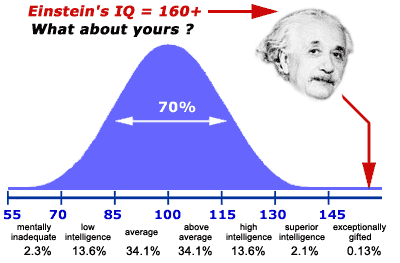The winter solstice occurred on December 21st at 7:04 a.m. EST this year. The winter solstice can be considered to be a time of beginnings. This solstice represents the shortest day and longest night of the yearly cycle. After this date, the days gradually increase and the nights decrease in length until the vernal (spring) equinox where day and night are of equal length once again (the other equinox being the autumn equinox). According to the Astrology of I Ching (mentioned in a previous blog), the winter solstice is considered the beginning of the next yearly cycle. The winter solstice represents more specifically a point in the solar cycle. It is the time when the sun, as it appears to us in the sky, is 270 degrees from its position during the vernal equinox (during the vernal equinox the sun is considered to be at 0 degrees). In Western astrology, this point is considered to be the start of the sign Capricorn; and the winter solstice occurs when the sun enters 0 degrees Capricorn. (Note for those who have no understanding of the astronomical basis for Western astrology: the signs Aries, Taurus, Gemini, Cancer, Leo, Virgo, Libra, Scorpio, Sagittarius, Capricorn, Aquarius, and Pisces are just the names representing the twelve 30-degree segments of the sky as seen from earth. Aries marks 0 degrees (which is pegged to the vernal equinox), Taurus – 30 degrees, Gemini – 60 degrees, Cancer – 90 degrees (the summer solstice), Leo – 120 degrees, Virgo – 150 degrees, Libra – 180 degrees (the autumn equinox), Scorpio – 210 degrees, Sagittarius – 240 degrees, Capricorn – 270 degrees (the winter solstice), Aquarius – 300 degrees, and Pisces – 330 degrees. Thus, the zodiac of twelve signs represents the 360 degree circle of the sky. This system of naming the twelve 30-degree segments is attributed to Ptolemy or Hipparchus or both.1 The names of the signs are also names of constellations in the sky, and it is generally believed these names were chosen because, long ago, it appeared that the sun was in the constellation of Aries during the vernal equinox. Presently, due to the precession of the equinoxes, the sun is in the constellation of Pisces during the vernal equinox. Regardless, the zodiac names are convenient for referencing the twelve 30-degree segments of the sky.)
The winter solstice is a significant marker in the Chinese lunisolar calendar (see “The Essence of the Chinese Calendar”). The winter solstice is the solar center point of the 11th solar month. It is always found in or close to the beginning of the 11th lunar month in that calendar to ensure that the 1st lunar month (the start of the Chinese lunar new year) falls approximately during the same time in the solar cycle (also ensuring the Chinese lunar new year does not start too late in the solar cycle).
The winter solstice is used in Robert Graves’ calendar as marking the last day of his 13th “lunar” month, Elder. The day after the winter solstice was named the “Day Apart”. The next day was the start of the 1st month, Birch. Graves’ calendar was discussed in some detail in a previous blog called “Calendars and Full Moons”, where I also mentioned two other calendars, Kondratiev’s and a Lakota calendar by Grey Wolf. Kondratiev’s calendar is not based around the winter solstice. Noticeably though, the winter solstice falls near the end of his second month, the Tide. In the Lakota calendar, the winter solstice falls in the 10th month called “Hard Freeze”.
The winter solstice has gradually become to represent a time of beginnings for me. It is the time of the year where I tend to gather my thoughts and think about the past. Then I start to think ahead and make plans for the time of increasing daylight and warmth. It seems to me to be a peaceful time, a time where I wrap myself in my own imaginary cocoon waiting to emerge when the days start to increase in length. Thus, I have been thinking about the yearly cycle, both the solar and the lunar. I have been thinking about what this time of year means to me. What else could it possibly mean?
Some meanings for this time of year can be drawn from the calendars I mentioned above. As mentioned the winter solstice falls in the 11th solar and lunar month of the Chinese lunisolar calendar. Although the winter solstice is one of the 24 solar segments of this calendar, it follows the Heavy Snow segment (which marks the beginning of the 11th solar month and started on December 7th this year). The next solar segment after the winter solstice is the Little Cold segment (which marks the beginning of the 12th solar month). Little Cold starts on January 5th and is followed by Severe Cold starting on January 20th.
The winter solstice was the end of the month of Elder in Graves’ calendar. The 22nd was the Day Apart. The Birch month started on December 23rd. Meanings associated with birch include birth and beginnings. Graves’ clearly considered this month to be a time of birth due to increase of daylight, which can symbolically be seen as the strengthening of the sun. As I wrote in my earlier blog, “Calendars and Full Moons”, the birch “represents beginnings and it seems to be fitting since this is the time of year where we begin new things even if it’s just thinking of them – conception of an idea is definitely something belonging to birch”.
According to Kondratiev’s calendar we are now in the Stag month, which started on December 23rd along with Graves’ Birch month. We have left the Tide month in Kondratiev’s calendar. Perhaps we could consider what transition takes place from the Tide to the Stag months. Of the Tide month, Kondratiev speaks of a journey into the dark out of which comes renewal and rebirth. Of the Stag month, Kondratiev speaks of the glimmer of light. The stag is as a “luminous presence, bringing hope”. Kondratiev writes “In the context that concerns us, he (the stag) is a most appropriate messenger for the great change that is to take place after the Winter Solstice. Although the earth remains dark and fruitless, nights are still overwhelmingly longer than days, the light has begun – imperceptibly as yet – to grow.” Thus, Kondratiev suggests that, during this month, “we contemplate light – not in association with any meaning or purpose”, but what it actually is – something that banishes the dark and shines bright and clear.
Lastly, we have the Hard Freeze month from December 11th to January 10th in the Lakota calendar. Interestingly, the month in this calendar has a simliar theme to the corresponding solar segments in the Chinese lunisolar calendar. Not surprising if you consider the geographical locations where these two calendars were developed – they have a similar climate. Of this month, Grey Wolf mentions the hazelnut, which is strong and resilient and hard to crack. Perhaps during this month, we need to be like the hazelnut – strong and not cracking under the strain of this very cold time of the year!
Upcoming calendar dates:
December 27 – new moon at 7:22 a.m. EST; start of the 12th lunar month in the Chinese calendar, known as the Ox month in Chinese astrology (the Chinese lunar months start on the new moons)
January 5 – 12th solar month in the Chinese calendar, Little Cold segment (I should note here that the Chinese calendar dates I’m giving are from an actual Chinese calendar, which is set for Chinese Standard Time – 13 hours ahead of EST. No times are given in the Chinese calendar though. To be precise to your location, if you know Western astrology, check the time at which the sun is at 15 degrees Capricorn.)
January 10 – full moon at 10:27 p.m. EST; Blue moon in the Lakota calendar (second full moon in Hard Freeze month, the previous full moon was on December 12th); Wolf moon, folk name for the full moon this month (there are other folk names, but I prefer the Wolf moon)
January 11 – Deep Snows month in the Lakota calendar
January 19 – (See the note for January 20)
January 20 – Rowan month in Graves’ calendar; Severe Cold segment in the Chinese calendar (As noted above, I’m using Chinese calendar dates. Severe Cold segment occurs when the sun enters Aquarius. As mentioned, you may use Western Astrology to find the precise time of this event for your location. I use the Astrological Pocket Planner, which indicates that the sun enters Aquarius on January 19.)
January 21 – The Flood month in Kondratiev’s calendar
January 26 – new moon at 2:55 a.m. and solar eclipse at 2:59 a.m. EST; Chinese Lunar New Year – Year of the Female Earth Ox (1st lunar month, known as the Tiger month)
February 4 – Imbolc; Chinese Solar New Year – Li Chun (Start of Spring) segment (1st solar month) in the Chinese calendar (Li Chun occurs when the sun is at 15 degrees Aquarius. Again, use Western astrology to check the precise time. You will note that I list Imbolc here as well. This was explained in my previous blog, “Happy Dog Year and Imbolc”. When I have the chance, I will check the dates and times for the major sabbats, Imbolc, Beltane, Lughnasadh, and Samhain for this coming year.)
~~~C
Notes:
1. See David Ovason’s The History of the Horoscope on page 23, “…Ptolemy had adopted the tropical zodiac – the zodiac of the twelve equal-arc signs – associated with the mathematician Hipparchus, who set the beginning of the zodiac against the vernal equinox.”)


